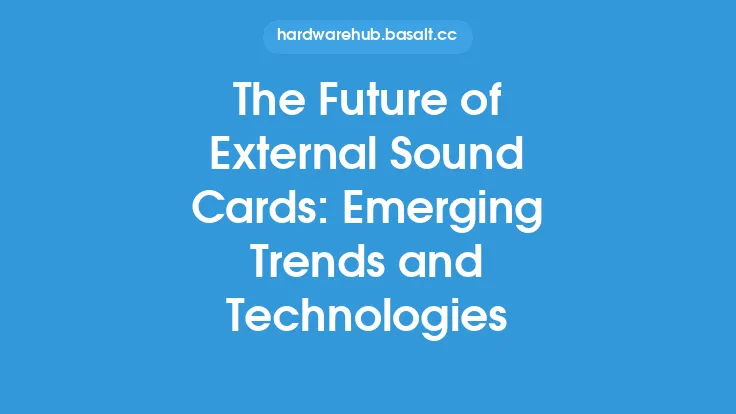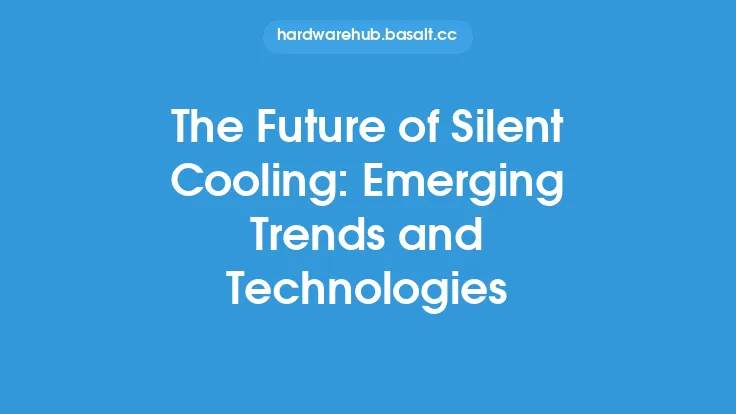The world of webcams has undergone significant transformations over the years, driven by advancements in technology and changing user needs. From their humble beginnings as simple, low-resolution cameras to the high-definition, feature-rich devices we see today, webcams have become an essential component of modern computing. As we look to the future, several emerging trends and technologies are poised to shape the evolution of webcams, enabling new use cases, improving performance, and enhancing the overall user experience.
Emerging Trends in Webcam Technology
One of the most significant trends in webcam technology is the increasing adoption of artificial intelligence (AI) and machine learning (ML) algorithms. These technologies enable webcams to perform tasks such as facial recognition, object detection, and automatic scene adjustment, making them more intelligent and responsive to user needs. For instance, AI-powered webcams can automatically adjust exposure, contrast, and color balance to optimize image quality, even in challenging lighting conditions. Additionally, ML algorithms can be used to detect and remove background noise, resulting in clearer and more stable video feeds.
Another trend that is gaining traction is the integration of augmented reality (AR) and virtual reality (VR) capabilities into webcams. This enables users to create immersive, interactive experiences that blur the lines between the physical and digital worlds. For example, AR-powered webcams can overlay virtual objects, effects, and information onto real-world environments, opening up new possibilities for applications such as remote training, education, and entertainment. Similarly, VR-enabled webcams can provide users with a more engaging and interactive way to participate in virtual meetings, conferences, and events.
Advances in Image Sensor Technology
The image sensor is a critical component of any webcam, responsible for capturing light and converting it into electrical signals that can be processed and displayed as images. Recent advances in image sensor technology have led to the development of more sensitive, faster, and more efficient sensors that can capture high-quality images in a wide range of lighting conditions. For example, backside-illuminated (BSI) image sensors have become increasingly popular in recent years, offering improved low-light sensitivity and reduced noise compared to traditional frontside-illuminated (FSI) sensors.
Another significant development in image sensor technology is the emergence of 3D stacked image sensors. These sensors use a layered structure to separate the photodiode and processing circuitry, resulting in improved sensitivity, reduced noise, and increased dynamic range. 3D stacked image sensors also enable the integration of more advanced features, such as phase detection autofocus and optical zoom, which can enhance the overall performance and versatility of webcams.
The Role of Computer Vision in Webcams
Computer vision is a field of study that focuses on enabling computers to interpret and understand visual information from the world. In the context of webcams, computer vision can be used to perform tasks such as object detection, tracking, and recognition, as well as scene understanding and analysis. For example, computer vision algorithms can be used to detect and recognize faces, allowing webcams to perform tasks such as facial recognition, emotion detection, and automatic scene adjustment.
Computer vision can also be used to enhance the security and privacy of webcams. For instance, algorithms can be used to detect and alert users to potential security threats, such as unauthorized access or tampering. Additionally, computer vision can be used to implement features such as automatic privacy mode, which can detect when a user is not present and adjust the webcam's settings accordingly.
The Impact of 5G and Edge Computing on Webcams
The advent of 5G networks and edge computing is poised to have a significant impact on the world of webcams. With 5G, users can expect faster, more reliable, and lower-latency connections, enabling real-time video streaming and communication. This can be particularly beneficial for applications such as remote meetings, online education, and telemedicine, where high-quality, low-latency video is essential.
Edge computing, on the other hand, enables data processing and analysis to be performed at the edge of the network, closer to the source of the data. This can reduce latency, improve performance, and enhance the overall user experience. In the context of webcams, edge computing can be used to perform tasks such as video encoding, decoding, and analysis, reducing the load on the camera and enabling more efficient, real-time processing.
The Future of Webcam Design and Form Factor
As webcams continue to evolve, we can expect to see significant changes in their design and form factor. One trend that is gaining traction is the development of more compact, portable webcams that can be easily integrated into laptops, tablets, and other mobile devices. For example, some webcams now use a USB-C connector, which provides a more compact and reversible design compared to traditional USB-A connectors.
Another trend is the emergence of webcams with more advanced, adjustable designs. For instance, some webcams now feature adjustable arms, clips, or magnetic bases, allowing users to position the camera in a variety of ways and angles. This can be particularly useful for applications such as video conferencing, where a flexible, adjustable camera can help users to capture the best possible image.
Conclusion
The future of webcams is exciting and rapidly evolving, driven by advances in technology, changing user needs, and emerging trends such as AI, AR, and VR. As we look to the future, we can expect to see webcams that are more intelligent, more interactive, and more integrated into our daily lives. With their increasing importance in applications such as remote work, online education, and telemedicine, webcams will continue to play a vital role in shaping the way we communicate, collaborate, and interact with each other. Whether you're a consumer, a business user, or a developer, the future of webcams holds much promise and opportunity, and it will be exciting to see how these technologies continue to evolve and improve in the years to come.





